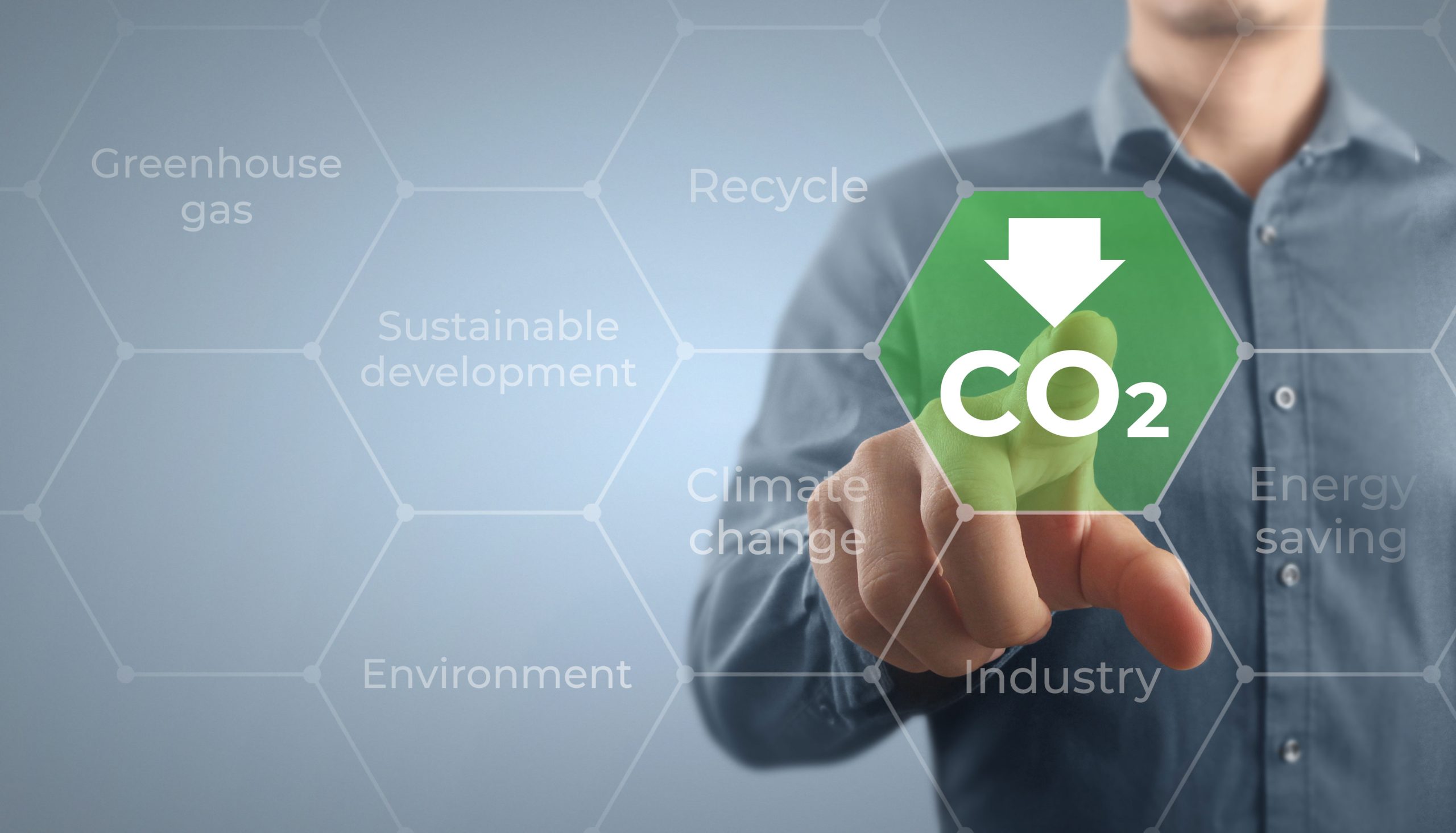Environmental footprint of ProTerra certified Brazilian soybean products
The ProTerra Foundation is a not-for-profit organization that promotes sustainable food and feed supply chains. In 2006 the ProTerra Standard was created to trace and communicate non-GMO and promote sustainable crop production and processing. A key focus area of ProTerra is to supply sustainable Brazilian soybean products to the European market.
ProTerra asked Blonk Consultants to analyse the environmental footprint of the ProTerra Standard certified soybean and soybean meal and oil. The environmental impact categories in scope are carbon footprint, water consumption and land use. The environmental footprint included the following life cycle stages: soybean cultivation, transport from farm to crusher, soybean crushing and transport to the European market.
Calculating the environmental footprint of soybean meal and oil
The environmental footprint of soybean cultivation is based on state specific secondary data from Embrapa, the Brazilian Agricultural Research Corporation. Data of four Brazilian states were included: Goiás (GO), Minas Gerais (MG), Mato Grosso (MT) and Paraná (PR). Based on the origin of the Proterra certified soybean (66% MT, 16% PR, 13% MG, 5% GO), a weighted average was used.
Regarding land use change (LUC), we used primary data from a survey done among ProTerra certified farmers, which aimed at knowing if LUC occurred before 2008. In total 85 out of 776 farmers replied, from which 74 reported no LUC before 2008. For the farmers that did not reply (90%), we assumed that the default LUC emissions occurred. To assess the emissions from LUC, data at state level was used based on the BRLUC from EMBRAPA.
For the production of soybean meal and oil (soybean crushing), primary data was available through the soybean crushers and data from the Agri-footprint 5.0 database was used for the transport to Europe.
In the case of the European production, Proterra-specific European production mix was used: Ukraine (60%), Italy (29%), Germany (8%), France (1%), Belgium (1%) and Poland (1%). Default processes from the AFP 5.0 were used to model the cultivation and processing of European soybean.
Results: Environmental footprint of certified soybean products
Brazilian Soybean meal and oil
A tonne of ProTerra soybean meal from Brazil and used in Europe emitted 2.53 t CO2-eq., consumed 0.45 m3 water and used 2,650 m2 of land. Figure 1 shows these values compared to the Brazilian defaults from the Agri-footprint 5.0 database. Agri-footprint had a 46% higher carbon footprint due to higher emissions of land use change, since it is country-specific instead of regional as in the case of the Brazilian tool (BRLUC). Agri-footprint also had 57% higher water consumption and similar land use (2,660 m2 for Agri-footprint 5.0) than the ProTerra Brazilian soybean meal.
Regarding the production and transport of 1 tonne of ProTerra soybean oil to Europe, it emitted 5.42 t CO2-eq. (58% less than the default value of Agri-footprint 5.0), consumed 0.97 m3 water (65% less than Agri-footprint 5.0) and used 5,730 m2 of land (22% lower than the default value of Agri-footprint 5.0).
Comparison with the European soybean products
The values have been compared to the ProTerra-specific European production mix (Figure 2). While the carbon footprints of Brazilian soybean products are higher than the European ones, the land use and water consumption in Brazil are lower due to higher yields and less irrigation. When LUC emissions are excluded, the Brazilian soybean products have lower carbon footprints.
Under ProTerra the conversion of land into agriculture must have happened before 2008.
Land areas degraded after 2008, be it for human intervention or natural causes, are not eligible for certification under ProTerra under any circumstances.
Concluding remarks
From the analysis it can be concluded that the availability of primary data is crucial to make more accurate calculations. In order to be able to make claims accurate and company-specific data should be used instead of secondary data from LCA databases.
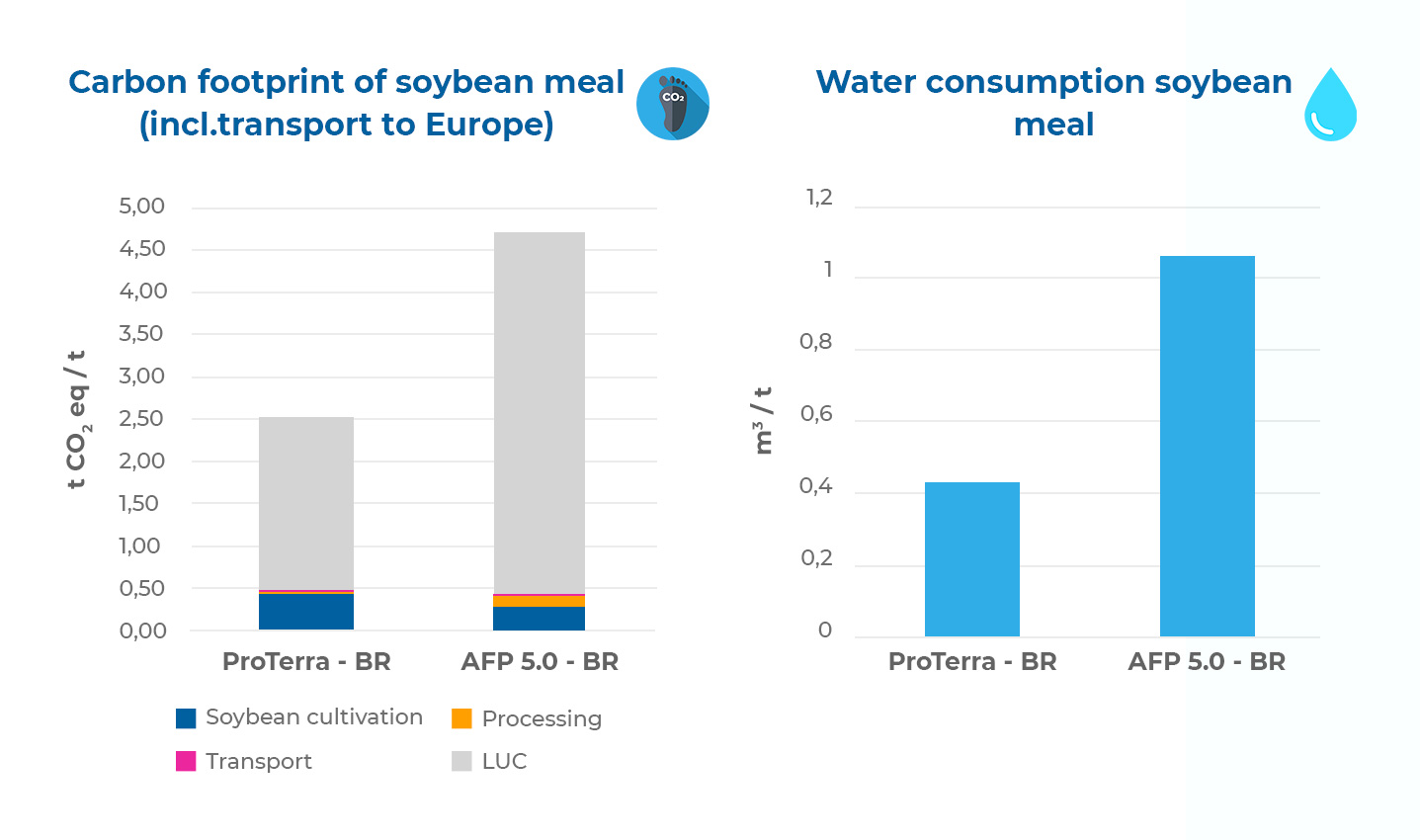
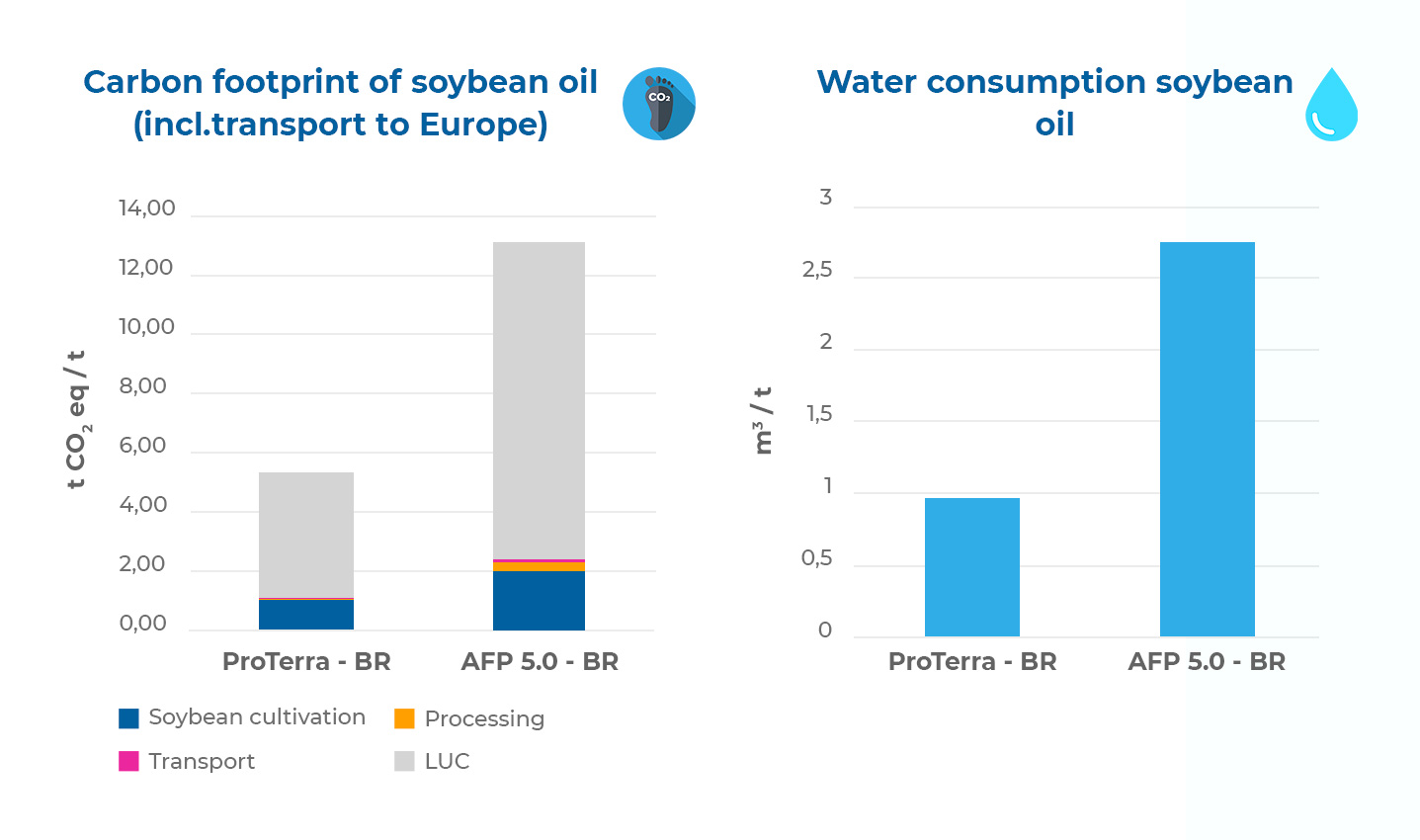
Figure 1- Carbon footprint, water consumption and land use of soybean meal and oil based on the Brazilian ProTerra data (incl. transport to Europe) and the default values for Agri-footprint 5.0.
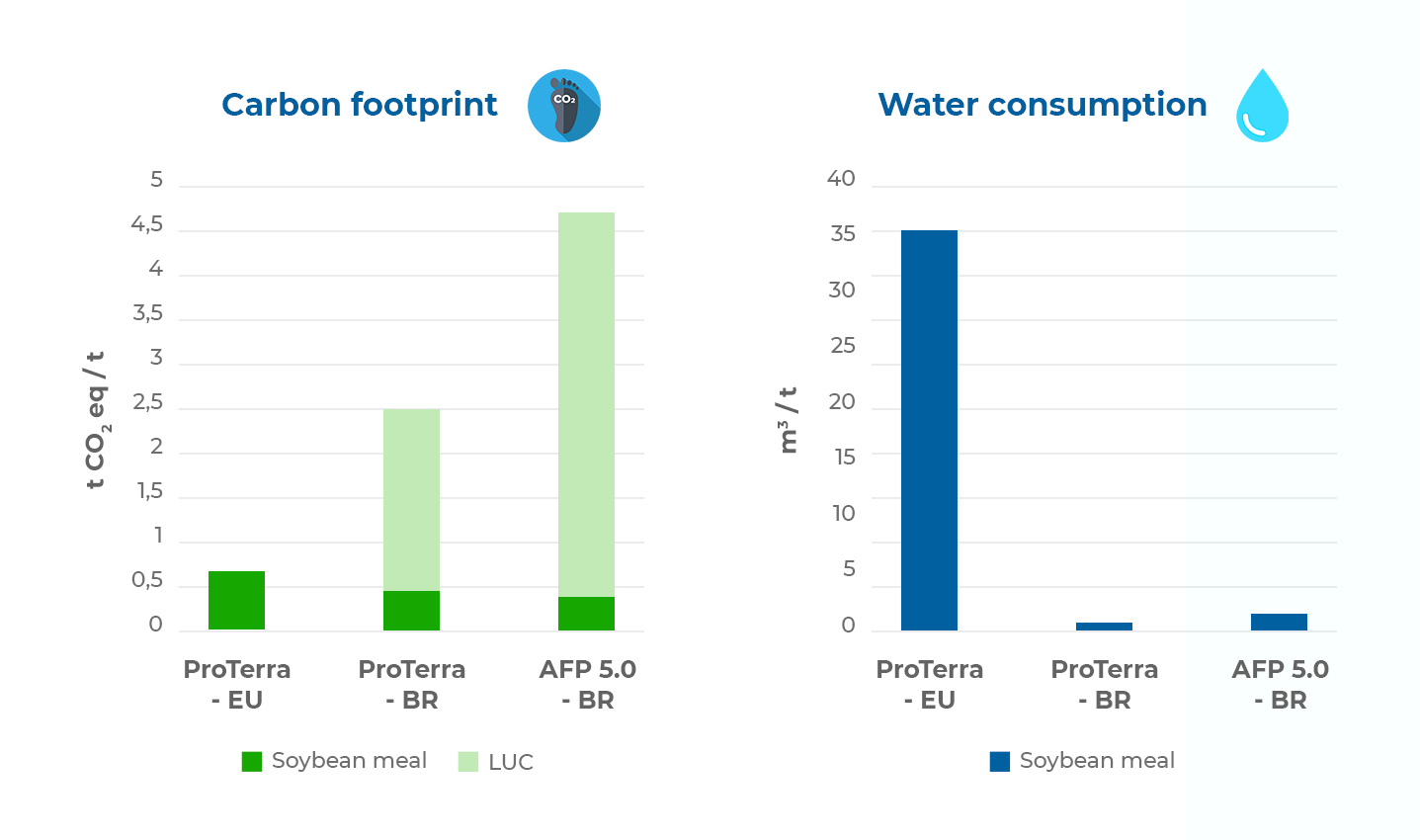
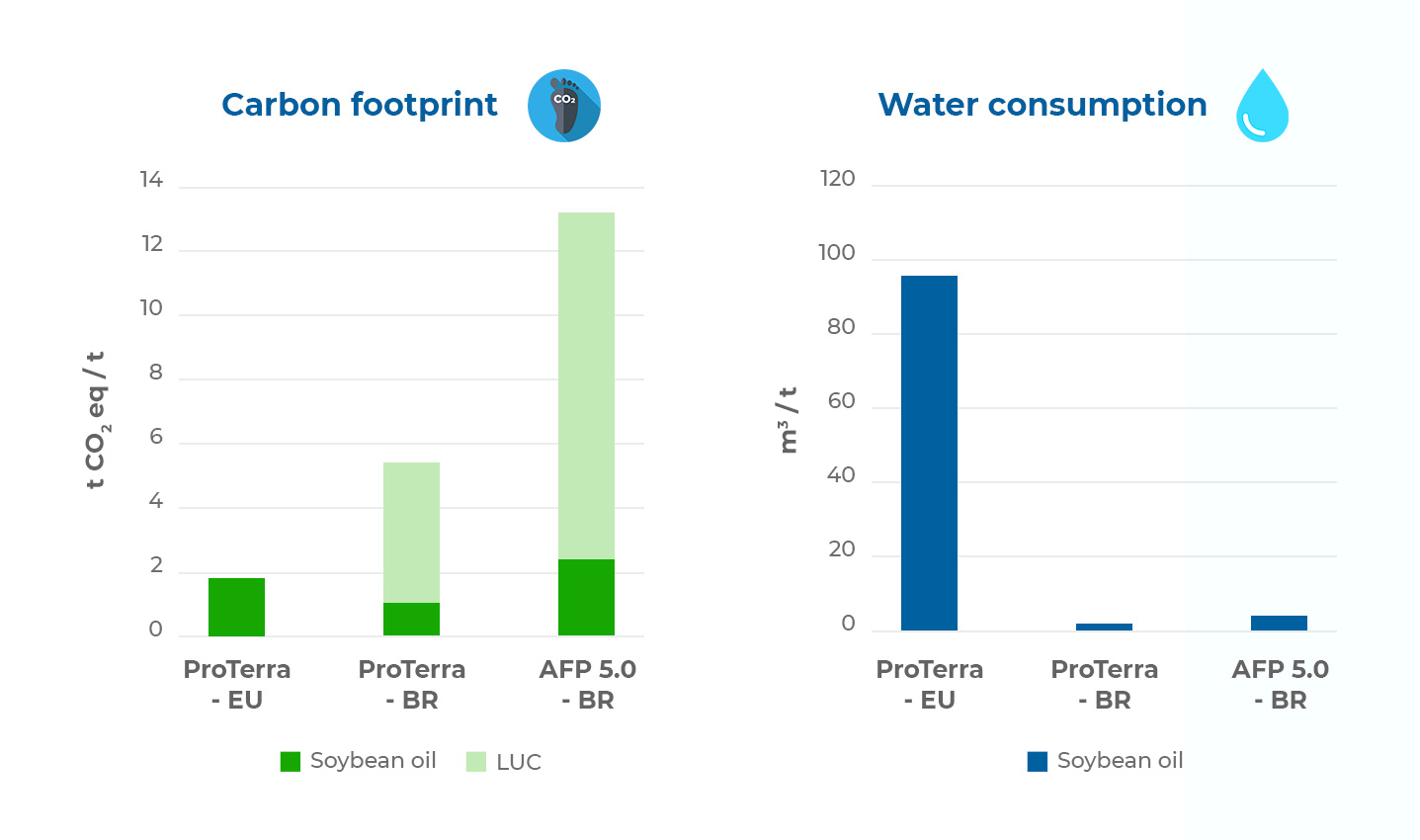
Figure 2- Carbon footprint, water consumption and land use of soybean meal and oil based on Brazilian ProTerra data (incl. transport to Europe), the European Proterra specific production mix and the default values for Agri-footprint 5.0 database.
